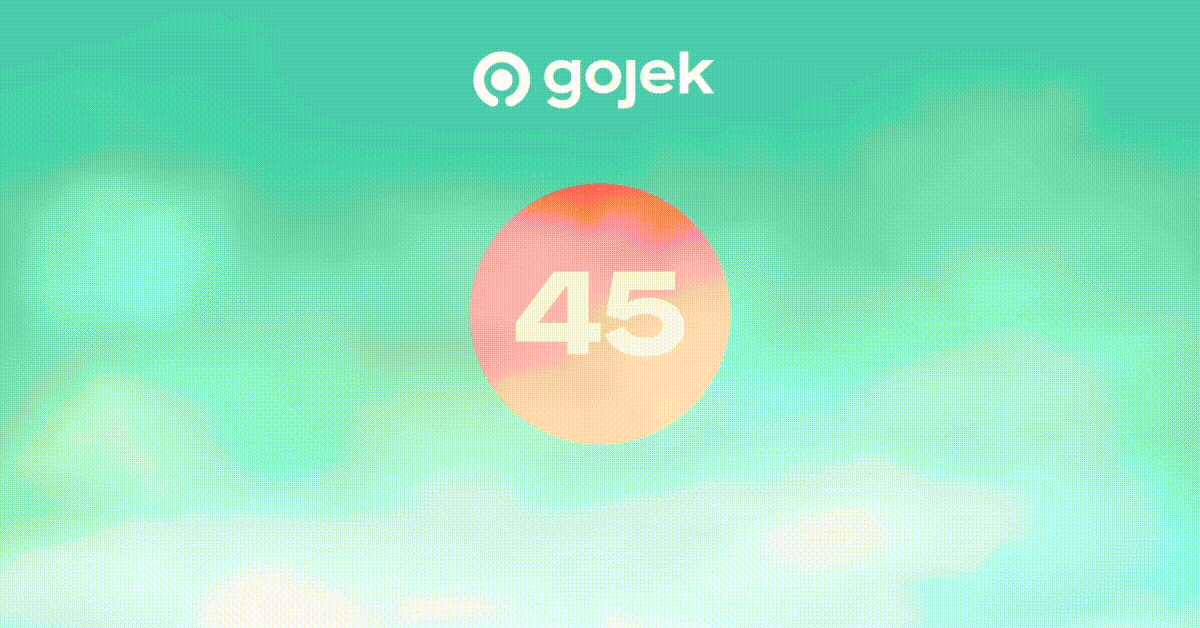The Journey to Beta Launch: Gojek’s Singapore Story
A timeline of the 45 days leading up to the launch of the Gojek app in Singapore.

By Vikrama Dhiman
In an organisation, momentum and early success on a critical project is generally followed by two things:
- You get extra attention (and increased expectations)
- You become cautious about your next steps
Both those things happened to us when we completed the internal alpha launch (cash bookings on production with curated drivers and riders) for Gojek Singapore. You can check out that story here:

Internally and externally; from early riders and drivers to marketing and executive management, the feedback — most of it good — started to pour in. There was no time to savour it though. There was plenty of work to be accomplished (yes, Robert Frost’s famous poem was cited many a time)! 🙂
The next milestone — an Alpha++ launch — would include payment features for our drivers (money withdrawal, payment history, SG timezone and currencies). We would also work on polishing the customer experience on promotions, support, and analytics. All this, in just three weeks.
That was not all, the rest of the timeline looked like this:
Driver Onboarding — 5 weeks away.
Actual Launch — 7 weeks away.
Until Alpha launch, Gojek’s Simba team (the Singapore launch Engineering-Product-Design team) had been able to work alone. The next milestone would need closer coordination and collaboration across Marketing, Growth, Operations, Marketplace, Customer Care Units, and Driver Partner Relationship managers. In addition, engineering teams from the OpsTech Platform, Driver Platform, GoPay, and Midtrans (a Gojek company which provides payment gateway solutions in Indonesia and SE Asia) were also contributing to these milestones.
Coordination with so many different teams in such a short time window was always going to be challenging. What added to the challenge was that these teams were also distributed across Jakarta, Singapore, and Bangalore. Given this situation, even a well-thought-out plan would be tough to execute. Besides this, we had to navigate headwinds in the form of feedback from customers and drivers from the ongoing Internal Alpha trials.
If the Internal Alpha launch was a test of our engineering excellence, the next milestones would be a test of project management. Were we up for it?
All Hands on Deck!
The tailwinds to counter the headwinds were manufactured on a 3-pronged project management approach:
- Loose framework, independent teams: When you have a lot of tasks open across different teams, you can manage using a top-down approach or define loose and evolving working contracts — enabling teams to work independently. We chose the latter approach. This was made possible because ‘alignment meetings’ are rare at Gojek — teams prioritize work organically. This significantly reduced coordination overhead.
- Cross-team working group: We also set up a cross-team working group (modeled on the lines of Scrum of Scrums) to triage issues, surface dependencies, and share news. This team kept most discussions asynchronous — which optimized coordination across different time zones.
- Tactical hustle: The first priority was getting the job done. iOS developers picked up work on the Android driver app, backend developers worked on the Android customer app, the Driver Partner Relationship team worked with the Web Development team. Our launch Kanban board was continuously reprioritized and teams synced up at engineering coworking sessions.
Hustle, hustle, hustle…
The tailwinds helped us take off… straight into turbulence.
Just as we reached cruising altitude en-route to the next milestone — we received critical feedback from expanded Alpha trials. Accommodating these changes would require time we did not have. In addition, the next milestone, Alpha++ launch happening as planned on October 31, 2018, was crucial. The Diwali holidays in India were coming up immediately after, and engineering bandwidth would be limited until November 14. To top it all up, Driver onboarding was already scheduled for November 14 as well.
There was simply no room to slip up.
This gave us an opportunity to test the famous project management triangle — Scope, Time, Cost. Given that time and cost was fixed, we could only prioritize and vary the scope.

Our Alpha++ trials initially included the flows for promotions and vouchers, and also credit card payments. We deprioritized promotions and vouchers to focus on fixing the issues we triaged (from both internal Alpha and integration with Gojek systems) as a top priority. We also focused on completing the functionality on our driver app and continuing work on the credit card payments for Singapore. Engineering and Operations teams across GoPay, Driver Platform, OpsTech Platform, Midtrans, and Simba coordinated to make this magic happen.
We launched Alpha++ as planned on October 31.
Unlike the previous phase, we brought the drivers onboard using our new driver onboarding tool, which allowed drivers to see their earnings on the app and also withdraw it to their bank accounts. The next day, we launched the functionality to test the customer and driver support flows.
Most of our engineering teams went home to celebrate Diwali content and having learned a key lesson: planning, like everything else in Agile, must be iterative too.
Even as we celebrated the festival of lights, there was a slight apprehension that the joy may be interrupted by pagers or production issues, indicating that something had failed or worse, we had impacted someone else’s systems inadvertently.
Luckily for us, that wasn’t the case.
The Diwali holidays went by without an incident. When we came back, we were on track for our immediate next milestone — Driver Onboarding. On November 14, 2018, we started the full driver onboarding process for drivers across Singapore.

We were now just two weeks away from launch.
Back to the Basics
Back on track to meet our major milestone of launching to customers in Singapore, we went back to tackle promotions and vouchers — the items we had deprioritised earlier. We also needed to integrate credit card functionality for customers, as well as fix the final issues for launch.
Even as work picked up on these items, Singapore itself was beginning to wake up to the arrival of a #SuperApp.

The interest in our launch helped us close a partnership with DBS. This was a huge endorsement to our launch and strategy.
However, this meant there was now one final twist in our launch tale. 🙂
We had planned to launch iteratively — start with the Central Business District (CBD) and East Coast and provide controlled access to ensure a great customer experience to first riders. With the DBS-Gojek partnership, we added priority access for DBS cardholders to our launch strategy. This added complexity in our registration flow.
We had to hustle one final time before launch.
Priorities were divided across Android and iOS so that the Android team continued to work on existing priorities while iOS picked up the DBS priority access flow. Once done, we switched the priorities and the Android team learned from the iOS team implementation on DBS priority access while iOS picked up lessons on promotions and vouchers.
Lesson: A great team is the ultimate plan.
Just before our teams from Jakarta and Bangalore moved to Singapore for launch, we set up a co-working room with the GoPay and Midtrans teams in Bangalore to test credit card functionality. All looked good, and we all gathered in Singapore for the launch.
The last week of November 2018 will always be a special one in the career of all the GoTroops who worked on our Singapore launch.
Here’s how the events unfolded:
November 26
We tested credit card functionality with a wider employee group. And… it worked. Our extensive testing had paid off. As a bonus, we also got the news that Midtrans and GoPay had added support for AMEX as well. 🙌
November 27
We tested the DBS priority flow and communicated the codes to DBS. We also rehearsed the process of providing access to customers with our Growth team. Everything worked perfectly. Fingers crossed for the next 2 days.
November 28
The driver app was released. We had a freak bug on one page of the driver app where the content continued to appear in Bahasa Indonesia, even though the language selected was English. This gave us an anxious few minutes. As a good luck charm, we even restarted the test device before testing it one final time. It worked. 😅
November 29
Early on the morning of November 29, our iOS app was up and running. The Android app rollout was delayed due to a bug in another product in Indonesia (remember, the same Gojek app works in both countries!). There was constant checking of the release channels, and towards the end of the day, the Android app was live as well.
This was it. Gojek was now in Singapore. We had set a date months in advance and met it. ✌️
Engineering, Product, Design, Operations, Marketplace, Marketing, Growth, Customer Care, Driver Partner Care — everyone came together in almost the perfect symphony.
Singapore loved us, and how. 🙂

As great as this accomplishment was, we still had a few things left to do. Robert Frost was still relevant.
The launch is important, but it is just a step towards meeting objectives. Would Singapore really be the strategic play that we planned it to be? Was getting to 10 million trips a piece of cake? (Spoiler alert: It was not). Read more about our Singapore story in the final part of this series (Coming Soon!).
Want our best stories delivered to your inbox? Sign up for our newsletter!





